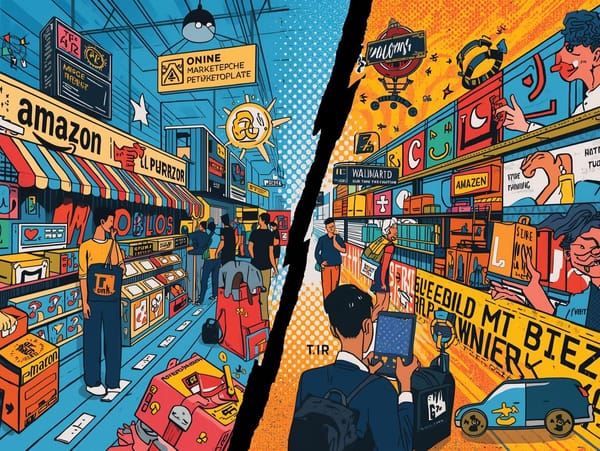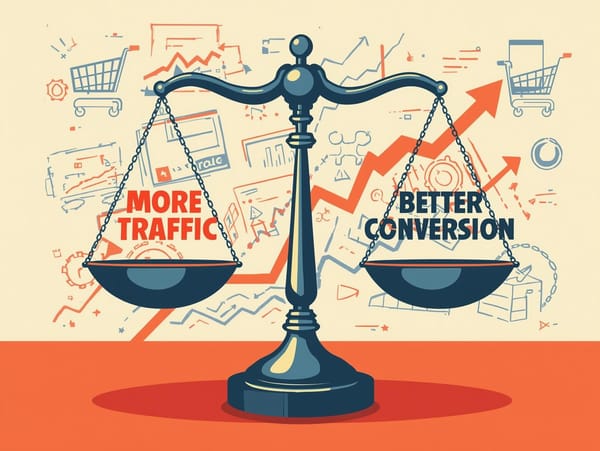Top 5 ways to generate traffic in 2025 - without spending on Ads
In 2025, organic traffic looks very different from the “10 blue links” era most of us grew up with.
Search is now deeply shaped by AI: Google’s Search Generative Experience (SGE), Bing Copilot, Perplexity, ChatGPT-style answers, and AI shopping assistants are often the first layer between your content and your audience. Recent industry commentary (e.g., Forbes’ discussion of Generative Engine Optimization and MarketScale’s focus on AI reshaping SEO) highlights a clear shift: brands that adapt to AI-driven, answer-first search are winning visibility, while those clinging to old-school keyword tactics are steadily losing ground.
For marketers and website owners, the goal hasn’t changed—reliable, compounding organic traffic—but the playbook has. Below are the top 5 ways to generate organic traffic in 2025, based on what’s working across SEO, content, and AI-driven discovery.
1. Optimize for AI Search, Not Just Traditional SEO
Traditional SEO (technical health, links, and on-page optimization) is still foundational, but AI-driven search is where much of the battle for visibility now happens. Analysts increasingly talk about GEO (Generative Engine Optimization) and AEO (Answer Engine Optimization)—in other words, making your content the “preferred answer” in AI overviews, chatbots, and voice assistants.
How AI search changes organic traffic
- Fewer clicks per query: AI overviews and direct answers reduce the need to click through to websites for basic questions.
- Higher-value clicks: When people do click, it’s usually because they’re deeper in the funnel or evaluating options.
- More surfaces to appear on: Your brand can show up in AI snapshots, product carousels, shopping assistants, or citation panels—not just in classic SERPs.
Practical steps
- Structure your content for answers.
Use clear H2/H3s, FAQ sections, and concise, 40–60 word answer blocks that AI systems can easily quote. - Target intents, not just keywords.
For each page, define the primary intent (informational, comparison, transactional) and structure content to fully satisfy it. - Use schema markup.
Implement FAQPage, HowTo, Product, Organization, and Article schema where relevant so search and AI systems can parse your content more reliably. - Cover topics in depth.
Instead of dozens of thin articles, build comprehensive guides and clusters that demonstrate clear topical authority.
Quick checklist for AI-search-ready pages:
- One clear main question the page answers
- Short “TL;DR” or summary near the top
- FAQs at the bottom addressing related questions
- Schema markup validated in Google’s Rich Results Test
2. Build Topic Authority with Content Clusters
With generative search summarizing entire topics, search engines and AI models lean heavily on authoritative sources, not one-off posts. In 2025, one of the strongest drivers of organic visibility is topical authority—showing that your site is a go-to resource on a specific subject.
What a content cluster looks like
A content cluster usually has:
- A pillar page
A deep, well-structured guide to a core topic (e.g., “The Complete Guide to Scaling D2C Fashion Sales in 2025”). - Supporting articles
Focused posts that cover subtopics in detail (e.g., “How to Optimize Product Pages for Mobile Shoppers,” “SEO for Seasonal Dropshipping Bundles”). - Internal links
Strategic links from each supporting post back to the pillar, and vice versa, creating a clear topical map.
Why this works in 2025
- AI systems look for breadth and depth when deciding what to cite.
- Search engines increasingly reward sites that cover a topic comprehensively rather than sporadically.
- Internal linking helps distribute authority around the cluster and keeps shoppers exploring (e.g., from product guides to reviews) instead of bouncing.
How to implement
- Choose 3–5 core topics aligned with your products, categories, or customer pain points (e.g., sustainable apparel, holiday gifting).
- Audit existing content and group it into those themes; identify gaps where you need new pieces (e.g., missing sizing guides).
- Create or upgrade pillar pages to be the definitive resource on each core topic.
- Plan 10–20 supporting articles per pillar, mapping them to specific shopper queries or use cases you want to rank for (e.g., “Best Gifts Under $50”).
- Standardize internal linking rules (e.g., all subtopic posts must link to the pillar with a consistent anchor and to at least two related subtopics).
This approach creates a self-reinforcing ecosystem that grows organic traffic over time and helps AI models “understand” what your store excels at—driving more qualified shoppers straight to cart.
3. Publish Original, Non-Commodity Content
With generative AI able to churn out generic posts in seconds, the web is flooded with lookalike content. Industry observers are blunt about it: bland, rephrased listicles are becoming invisible.
In 2025, originality is a major traffic lever. Not just in wording, but in data, perspective, and format.
What counts as original in an AI-saturated world?
- Proprietary data
Benchmarks from your product data, anonymized customer insights, or original surveys. - Real-world experiments and case studies
“We tested X vs. Y—here’s what happened.” - Strong, defensible opinions
Thought leadership that actually takes a stance, backed by evidence. - Unique formats
Teardown posts, interactive tools, calculators, templates, or live dashboards.
These are the kinds of assets AI systems are more likely to cite, and humans are more likely to share and link to.
Practical ideas you can ship this quarter
- Run a quick survey of your email list or customers and publish the results as a report.
- Turn a successful campaign into a detailed case study with numbers, screenshots, and lessons learned.
- Build a simple calculator or tool (e.g., ROI calculator, budget planner) and embed it on your site.
- Publish a “State of [Your Industry]” annual or quarterly report that you can update and re-promote.
Over time, a library of these high-signal assets becomes a durable moat for organic traffic.
4. Create Multiformat Content for Multimodal Discovery
AI assistants and search engines are becoming multimodal—they can understand and surface text, images, video, audio, and even product feeds together. Meanwhile, platforms like YouTube, TikTok, LinkedIn, and podcasts are all discovery engines in their own right.
Relying solely on written blog posts is now a risk. To grow organic traffic in 2025, think in systems and assets, not just articles.
How to go multiformat without burning out
Start with a core piece of content (often a deep article, webinar, or report), then spin it out:
- Article → Video
Turn your top-performing posts into short explainer videos or screen-share walkthroughs for YouTube. - Article → Short-form clips
Cut those videos into shorts/Reels with strong hooks for TikTok, Instagram, and YouTube Shorts. - Article → Carousel or slides
Turn frameworks and step-by-step processes into LinkedIn carousels. - Article → Podcast episode
Discuss the topic with a guest or internal expert and post to podcast platforms. - Article → Downloadable resource
Package checklists, templates, or worksheets into gated or ungated downloads.
Each format is another entry point where people can discover you organically, and many of these platforms now feed signals back into search and AI assistants.
Implementation tips
- Start by identifying 5–10 “hero” topics that deserve multiformat treatment.
- Create repeatable production workflows (e.g., blog → script → recording → shorts → social posts).
- Ensure all formats drive back to a central hub page on your site so you capture and measure the traffic.
5. Invest in Brand, Community, and Direct Relationships
As AI overviews capture more top-of-funnel attention, brand recognition becomes a crucial traffic driver. People are more likely to add brand modifiers to their queries (e.g., “pricing strategy template [your brand]”) or go directly to your site when they’ve heard of you elsewhere.
In parallel, community-driven discovery—newsletters, Slack/Discord groups, private communities, and events—creates organic traffic that doesn’t depend on algorithms at all.
Ways to build brand-driven organic traffic
- Publish a consistent newsletter
Share genuinely valuable insights, not just link dumps. Newsletters train your audience to expect and seek out your content. - Host recurring live sessions
Webinars, AMAs, office hours—and publish the replays on your site and YouTube. - Participate in niche communities
Share learnings, answer questions, and link back only where it’s clearly helpful and allowed. - Develop a recognizable POV
Maintain a consistent tone, stance, and visual identity across channels so people start searching for you by name.
Why this matters for search
- Branded search queries tend to convert better and are less vulnerable to algorithm updates.
- A strong brand increases click-through rates where your site does appear, which is a positive signal to search engines.
- Communities and partners naturally generate mentions and links, reinforcing your authority.
Putting It All Together: A 90-Day Action Plan
Here’s a simple roadmap you can adapt for the next 90 days:
Month 1: Foundations and Strategy
- Audit your site for technical issues, thin content, and overlapping topics.
- Choose your 3–5 core topics and define pillar pages and content clusters.
- Implement or clean up schema markup on your top 20–30 pages.
Month 2: High-Impact Content and Formats
- Publish or revamp at least 2–3 pillar pages.
- Launch one original-data or case study piece.
- Pick 2–3 existing articles and repurpose them into video + short-form clips.
Month 3: Distribution and Relationships
- Start or level up a weekly or biweekly newsletter.
- Host one live webinar or AMA tied to a core topic.
- Systematically engage in 1–2 relevant communities and track referral + branded search traffic.
Final Thoughts
Generating organic traffic in 2025 isn’t about gaming algorithms; it’s about being the best, clearest, and most trusted answer across an expanding set of discovery channels.
If you focus on:
- Optimizing for AI and answer engines
- Building deep topical authority
- Publishing truly original content
- Going multiformat across discovery platforms
- Investing in brand and community
…you’ll build an organic engine that compounds—even as search and AI continue to evolve.




